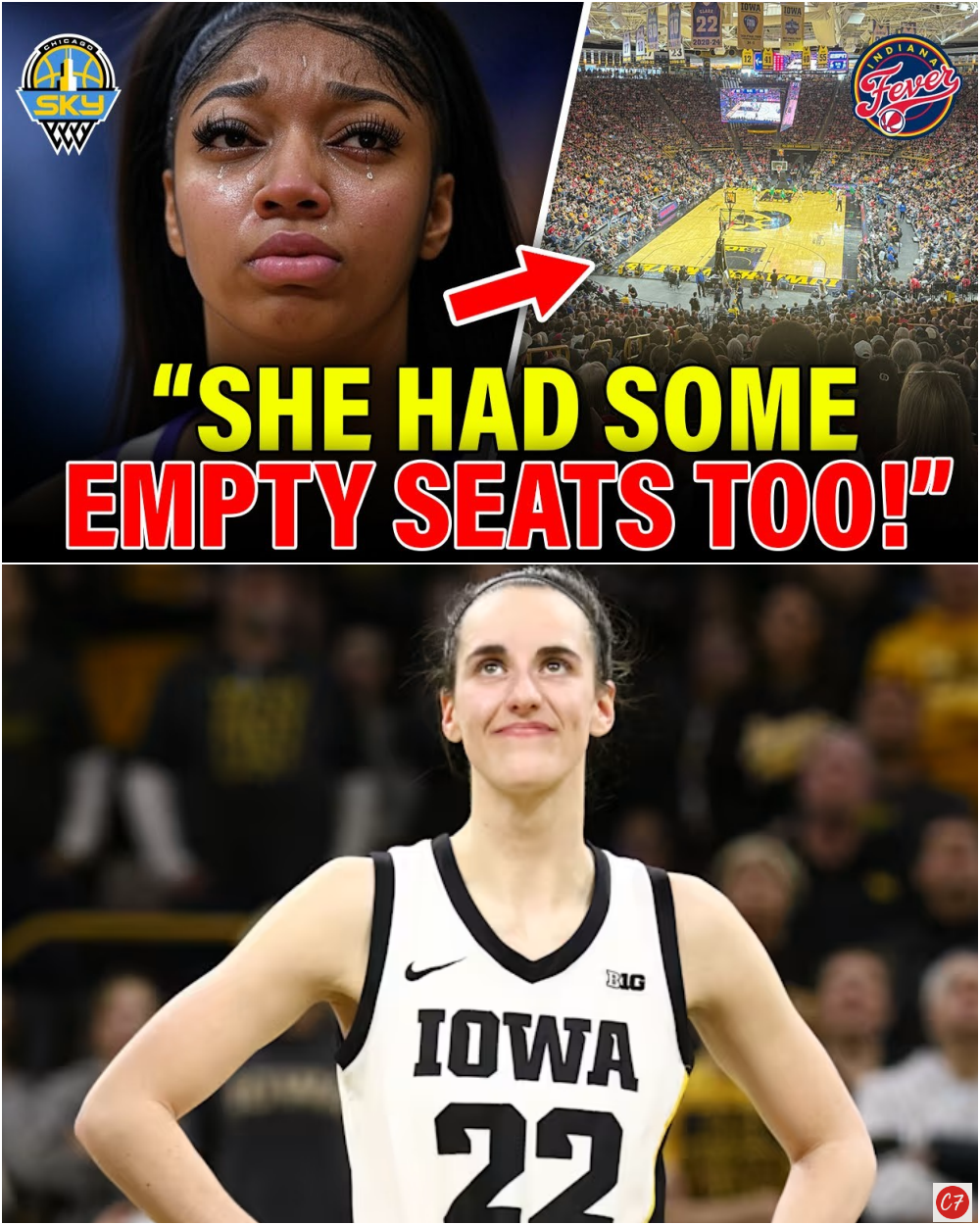
This past weekend, two of the WNBA’s most prominent rookies returned home. Both entered the league with enormous hype, massive followings, and the promise of transforming women’s basketball. One of them walked onto the court to a thunderous ovation in a sold-out arena.
The other was greeted by rows of empty seats.
The players? Caitlin Clark and Angel Reese.
And the contrast between their homecoming games may say more about their trajectories than any press release ever could.
A Tale of Two Returns
In Iowa City, Caitlin Clark returned to her college home, Carver-Hawkeye Arena, for a preseason game between the Indiana Fever and Brazil’s national team. The moment ticket sales opened, fans flooded the site. Within 27 minutes, every seat in the 15,000-seat arena was sold. Resale prices climbed above $400 for basic seats. Social media erupted. It wasn’t a game—it was an event.
In Baton Rouge, Angel Reese brought the Chicago Sky to LSU’s Pete Maravich Assembly Center to face the same Brazilian national team. The narrative seemed perfect. Reese—the Bayou Barbie—returning to the campus where she became a national champion. But when the game tipped off, only 6,373 fans showed up. The arena, which holds 13,000, was less than half full.
And the visuals? Stark. Entire upper decks were closed off. Even lower sections showed swathes of empty purple chairs.
The Numbers Don’t Lie
While Reese’s supporters have pointed to circumstances—timing, promotion, preseason apathy—the disparity is hard to ignore.
Both events were preseason games. Both were marketed as homecomings. Both had minimal stakes on the scoreboard.
But only one drew national headlines for crashing ticketing sites and forcing arena upgrades.
The other? Trended online for all the wrong reasons.
Social Media Reacts: From Celebration to Criticism
Images from LSU’s empty seats flooded social media. Fans questioned Reese’s self-proclaimed status as a major draw.
“She said she was the reason people watch women’s basketball. But half of Baton Rouge stayed home.”
Others defended Reese, pointing to weather and local promotion. But the criticisms were loud—and at times, cutting. Many pointed back to her previous statements:
“The reason why we’re watching women’s basketball is not just because of one person. It’s because of me too.”
Now, critics say the numbers are telling a different story.
“Caitlin doesn’t say a word. She just shows up and sells out.”
The Influence Equation: Who’s Really Moving the Needle?
There’s no question that both players have drawn attention to the WNBA. Their rivalry began during college and extended into the pros. Reese brings charisma, confidence, and championship pedigree. Clark delivers record-breaking stats, logo-range shooting, and a calm, relentless presence.
But when it comes to drawing fans into seats, the data is mounting:
Clark’s Indiana Fever sold out their preseason debut in minutes.
Angel Reese’s LSU homecoming failed to fill even half the building—despite $15 tickets.
Teams across the league are moving games to NBA arenas when Clark and the Fever visit.
Clark’s jersey is the top-selling rookie jersey in WNBA history.
National TV ratings spike whenever Clark plays.
And perhaps most telling: Clark isn’t the one making declarations about her impact.
From Flash to Fundamentals
Angel Reese has a massive following on social media. Her style, flair, and fashion have earned her sponsorships and brand deals. But some critics are starting to ask: Is her popularity translating to the court and the crowds?
“There’s a difference between being a brand and being a draw,” one analyst posted. “Right now, only one of them is doing both.”
A Broader Question: Is the WNBA Ready for the Truth?
This contrast raises difficult—but necessary—questions for a league seeking growth:
Are we basing star status on metrics or marketing?
Are we measuring draw by Instagram followers or ticket turnstiles?
Is the league promoting players who move merch—or players who move the game?
So far, Clark has become the face of the league organically. She hasn’t asked for it. She hasn’t declared it. But from packed arenas to prime-time broadcasts, the fans have made it clear.
The Reese Response—and a Missed Opportunity
In the aftermath of the Baton Rouge game, Angel Reese’s mother took to social media to push back against the criticism. Her response:
“While y’all are celebrating attendance, we’re celebrating banners.”
It was a nod to LSU’s national championship. A reminder of Reese’s college legacy. But to many, the comment came off as defensive, and perhaps dismissive of the real issue—why didn’t people show up?
Meanwhile in Iowa: A Festival, Not a Game
Clark’s return to Carver-Hawkeye wasn’t just well-attended. It was electric. The game was a preseason matchup, but the energy was closer to a Final Four.
Fans wore her college jersey, her new Fever jersey, and custom shirts made just for the event. The arena buzzed with chants. Scalpers stood outside offering tickets for four times face value.
And Clark? She didn’t post any bold statements. She didn’t respond to comparisons. She just played.
And the fans—again—followed.
Where This Leaves the League
The WNBA is having a moment. Attendance is up. Ratings are climbing. Merchandise is selling. But this weekend revealed something else:
Not all stars are built the same.
Angel Reese is a magnetic personality. She’s important to the league. But the assumption that she’s on equal footing with Clark in terms of draw may now need re-evaluation.
And that’s not a personal attack. It’s business. It’s visibility. It’s momentum.
Final Word: The Message in the Seats
Sometimes, the loudest statements come from the quietest places. In Baton Rouge, 6,700 empty seats sent a message.
In Iowa City, 15,000 fans on their feet sent another.
Both players are talented. Both have bright futures. But only one is currently driving the league forward—and the fans have made their choice.
No tweets. No declarations. Just full arenas.
Disclaimer:
This story is based on accounts, interpretations, and broader reflections drawn from public sources, community narratives, and widely shared perspectives. While every effort has been made to present the events thoughtfully, empathetically, and respectfully, readers are encouraged to engage critically and form their own interpretations.
Some characterizations, dialogues, or sequences may have been stylized or adapted for clarity, emotional resonance, and narrative flow. This content is intended to foster meaningful reflection and inspire thoughtful discussions around themes of loyalty, legacy, dignity, and human connection.
No harm, defamation, or misrepresentation of any individuals, groups, or organizations is intended. The content presented does not claim to provide comprehensive factual reporting, and readers are encouraged to seek additional sources if further verification is desired.
The purpose of this material is to honor the spirit of resilience, gratitude, and integrity that can often be found in everyday stories—stories that remind us that behind every figure we admire, there are countless silent heroes whose impact endures far beyond the spotlight.


